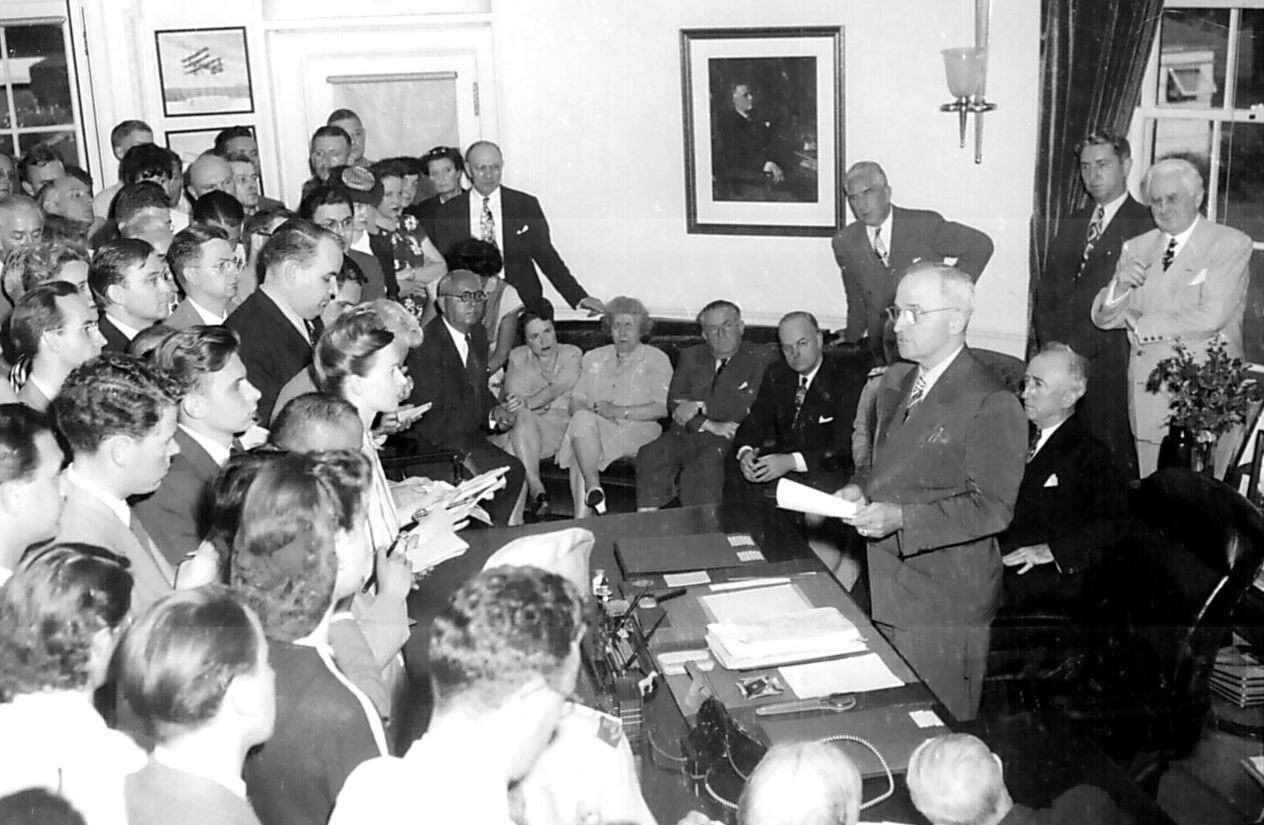Authors:
Historic Era:
Historic Theme:
Subject:
April/May 2003 | Volume 54, Issue 2


Authors:
Historic Era:
Historic Theme:
Subject:
April/May 2003 | Volume 54, Issue 2

What did President Harry S. Truman and his senior advisers believe an invasion of Japan would cost in American dead? In recent years this has been a matter of heated historical controversy, with Truman’s critics maintaining that the huge casualty estimates he later cited were a “postwar creation” designed to justify his use of nuclear weapons against a beaten nation already on the verge of suing for peace. The real reasons, they maintain, range from a desire to intimidate the Russians to sheer bloodlust.
See also: The Biggest Decision: Why We Had To Drop The Atomic Bomb, by Robert James Maddox
One historian wrote in The New York Times, “No scholar of the war has ever found archival evidence to substantiate claims that Truman expected anything close to a million casualties, or even that such large numbers were conceivable.” Another skeptic insisted on the total absence of “any high-level supporting archival documents from the Truman administration in the months before Hiroshima that, in unalloyed form, provides even an explicit estimate of 500,000 casualties, let alone a million or more.”
A series of documents recently discovered at the Harry S. Truman Presidential Library & Museum in Independence, Missouri, and described by this author in an article in the March 2003 Pacific Historical Review, tells a different story.
In the midst of the bloody fighting on Okinawa, which began in April 1945, President Truman received a warning that the invasion could cost as many as 500,000 to 1,000,000 American lives. The document containing this estimate, “Memorandum on Ending the Japanese War,” was one of a series of papers written by former President Herbert Hoover at Truman’s request in May 1945.
The Hoover memorandum is well known to students of the era, but they have generally assumed that Truman solicited it purely as a courtesy to Hoover and Secretary of War Henry Stimson, who had been Hoover’s Secretary of State. As it turns out, however, Truman had a much higher opinion of Hoover than do today’s historians.
“What we now know,” says Robert Ferrell, the editor of Truman’s private papers, “is that Truman seized upon this memo and sent memoranda to his senior advisers asking for written judgments from each.” Moreover, adds Ferrell, this discovery “not merely shows that Truman knew about such a high casualty figure” far in advance of the decision to use atom bombs but that he “was exercised about the half-million figure—no doubt about that.” Yet another discovery, by the Hoover Presidential Library’s former senior archivist, Dwight Miller, indicates that the estimate likely originated during